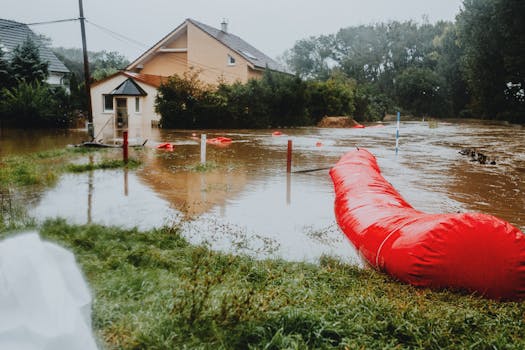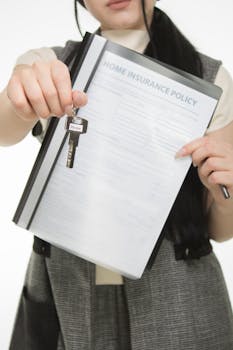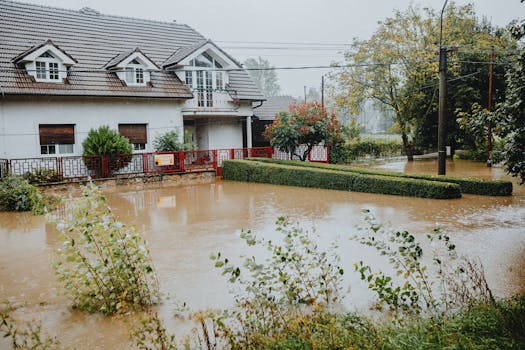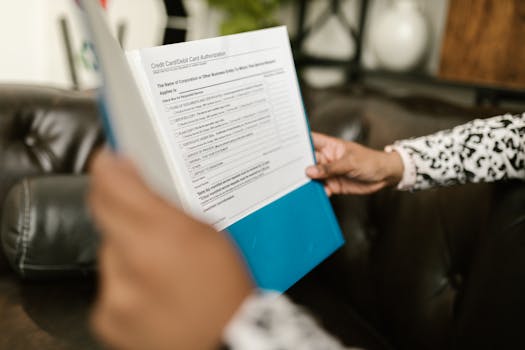Auto Insurance
Liability, Collision, and Comprehensive: What Each Type Covers
Decide with confidence which auto insurance coverage you really need. Dive deep into liability, collision, and comprehensive to save money and stay protected.
Advertisement
Imagine choosing auto insurance feels as complex as picking the right phone plan. You weigh costs, benefits, and risks. Tucked into almost every car policy are liability collision comprehensive coverage options, which shape what you pay for—and worry about—after an accident or loss.
Knowing exactly what these three core coverages do has concrete implications. If you understand liability collision comprehensive before buying or updating your policy, you can avoid paying for repairs yourself or discovering a gap too late to fix it.
This article breaks down what liability, collision, and comprehensive coverage mean for real drivers. Explore scenarios, learn key rules, and discover practical steps to align your insurance with your driving reality now.
Breakdown of the Three Essential Coverage Types
Liability, collision, and comprehensive coverage form the backbone of nearly every auto policy. Grasping what each one pays for—and what it doesn’t—lets you tailor your policy with confidence.
When a driver asks, “What does my insurance actually cover after a crash, hailstorm, or stolen stereo?” the answer depends on these three. Let’s clarify each coverage with both rules and workable examples today.
Liability Coverage: Foundation of Every Policy
Liability insurance pays for the other party’s damages—bodily injury or property repair—after you’re legally responsible in an accident. Most states make this a requirement so victims get compensated promptly, regardless of your finances.
Suppose you rear-end a sedan at a red light. Liability coverage pays for the driver’s injuries and car repairs (up to your policy limits). Without this, you’d personally owe the total cost, which could run thousands.
A common rule says drivers should never go below the minimum required by their state, but opting for higher coverage limits (like $100k/$300k) protects your home or assets if lawsuits exceed the minimums. Update limits after major life events.
Collision Coverage: Repairing or Replacing Your Vehicle
Collision pays to fix or replace your own car after hitting another vehicle or object, no matter who’s at fault. If your new SUV slides on ice and smashes a guardrail, collision covers repairs after your deductible is met.
This coverage isn’t required by law. However, loan or lease contracts usually demand it to protect their interest in your car. Once the loan’s paid, you can drop collision, but consider your car’s value and your savings before deciding.
Drivers opting out often say, “My car isn’t worth the premium.” Use this logic: If you couldn’t buy another car out-of-pocket after a total loss, keep collision on your policy until that changes.
| Coverage Type | What It Pays For | Mandatory? | Action if Not Carried |
|---|---|---|---|
| Liability | Other’s injuries & damage | Yes (by state law) | Pay all out of pocket, risk asset loss |
| Collision | Your car after crash | Only for financed/leased cars | Pay repair/replacement cost yourself |
| Comprehensive | Theft, fire, weather, vandalism, animals | Required by lenders/leasing companies | No protection from non-collision damage or loss |
| PIP/MedPay | Your medical bills, passengers | In some states | Medical bills not covered by your policy |
| Uninsured Motorist | Your injuries/damages from uninsured drivers | In some states | Risk paying your own costs after hit-and-run or uninsured collision |
Ways These Coverages Work in Real-World Scenarios
Choosing which portions of liability collision comprehensive to prioritize protects you differently in each accident or incident. Review your actual risks: where you drive, your finances, if you commute, and what cars you own.
If your friend says, “I hit a deer and now my hood’s destroyed—am I covered?” the answer hinges on comprehensive, not collision or liability. Recognizing these lines draws real savings and shields against major out-of-pocket expenses.
Theft, Weather, and Non-Crash Events
Comprehensive covers most non-crash mishaps. If a hailstorm dents your car, or a thief steals your catalytic converter, comprehensive pays for repairs or replacement after your deductible.
Drivers in cities with high theft rates or rural areas with roaming deer see the real value. Skipping this coverage looks tempting, but one major incident could mean hefty losses.
- Choose comprehensive if you park outside often; this mitigates theft and weather risks fast.
- Select a deductible you can comfortably pay anytime. This saves frustration when disaster strikes.
- Update policy details after moving; climate and crime rates can raise or lower risk factors directly.
- Add comprehensive before storm season or vacations; call your agent to check for any waiting periods.
- Don’t rely on luck—insurance works best as a planned protection, not an afterthought.
This approach ensures you’re ready for unexpected damage, not just collisions or liability claims, so you don’t face sudden car replacement costs alone.
Collision at Fault vs. Not at Fault
Collision coverage acts regardless of blame. You hydroplane and hit a pole—collision pays after your deductible, so you restore your ride quickly without court battles.
If another motorist hits you and they’re uninsured or underinsured, uninsured motorist and collision can work together. Always file a police report and claim promptly afterward for proper coverage assessment.
- File a detailed claim right away; include photos and any police report, so adjusters can respond faster.
- Read your declarations page for limits and deductibles; don’t assume your policy covers every scenario.
- If you have medical bills, check if MedPay or PIP applies—don’t just rely on collision or liability.
- For minor accidents, weigh repair costs against your deductible. Sometimes skipping minor claims preserves your premium rates.
- Ask for rental car coverage if your policy allows; you’ll avoid scrambling for transportation after a covered collision.
Keep your insurer’s phone number handy in your glovebox for fast help after any collision, ensuring you use every coverage you pay for effectively.
What Liability Insurance Means for Your Finances and Legal Safety
Meeting state minimum liability requirements isn’t just paperwork—it protects your bank account after even minor crashes. If your policy lapses, you could lose your license or face collections from damaged parties.
The difference between policy minimums and recommended coverage limits can be critical, especially if you injure several people or damage high-value property. Smart drivers consider this a basic safety net.
Raising Liability Limits Wisely
Drivers who say, “I only need the legal minimum,” risk major asset loss after a big accident. You’re financially exposed the moment damages exceed your insurance limit.
Raising bodily injury limits—even modestly—costs little compared to the risk. Example: Increasing coverage from $25,000 to $100,000 annually can be as low as $30 extra per year on average.
Talk with your insurer when buying a home, switching jobs, or adding a teen driver. These life events signal it’s time to revisit your limits and strengthen your liability shield.
Protecting Against Lawsuits
Liability coverage won’t protect your car, but it safeguards against lawsuits—especially after severe injuries. Plaintiffs’ attorneys look for the largest policy and assets they can find if medical bills mount.
Set an example for younger drivers: “If it’s not covered, it’s coming from your savings,” a parent might warn. Adequate liability insurance makes sure accidents don’t spiral into long-term debt.
Keep documentation clear. Drivers should collect other parties’ info, file police reports when required, and call their insurer the same day as an accident. Quick action averts many disputes about who pays for what.
Customizing Collision Coverage to Fit Your Vehicle and Situation
Adjusting collision coverage—amounts, deductibles, add-ons—helps drivers fine-tune protection as cars age, loans end, or financial needs change. Use your car’s estimated value to run the numbers each renewal cycle.
Never assume yesterday’s decisions fit tomorrow’s situation. If your car’s value drops below $1,500, for instance, paying for collision may not make sense anymore. Review your policy for waste and risk every six months.
When to Drop Collision Coverage
As soon as your car’s payout value is less than the cost of annual premiums plus deductibles, drop collision. Apply this hard rule just before your next renewal or after a mechanic’s devaluation.
Some drivers say, “My savings can handle buying a used car outright.” If this rings true, funding repairs yourself over time may beat insurance costs after a total loss.
If you lease or finance, don’t drop collision until the contract ends and you own the car free and clear. Lenders require it so their investment remains protected through the payout process.
Choosing Deductibles for Maximum Savings
Raising your deductible from $500 to $1,000 can slash premiums noticeably—sometimes by 20%. Only take this step if you have enough in a savings fund to cover repairs out-of-pocket after a crash.
Revisit your deductible when your financial health changes, like after paying down debt or getting a promotion. The right deductible balances premium savings with surprise repair bill risk.
Every driver should memorize: “Don’t pick a deductible I can’t pay on short notice.” Assess your monthly cash flow before each policy renewal for continued peace of mind.
Maximizing the Value of Comprehensive Insurance
Comprehensive coverage protects against theft, natural disasters, falling objects, vandalism, and animal strikes—situations where collision and liability won’t help. If you live where tornadoes, wildfires, or break-ins occur, skipping this puts you at real risk.
Think of comprehensive as your “umbrella” for unpredictable losses. It fills in crucial coverage gaps and saves thousands when freak incidents damage your car far beyond fender-bender repairs.
Reviewing Deductibles Versus Realistic Claims
Picking a low deductible for comprehensive guarantees smaller bills after a break-in or storm. However, balancing premium cost with deductible size gives you the best value overall.
If you park on the street, ask your agent about actual weather and theft risk in your ZIP code before setting a deductible. They see claim patterns locally, not just averages nationwide.
Combine a realistic deductible with careful parking—under trees or in garages when possible—to cut your exposure further, even with comprehensive coverage on your policy year-round.
Expanding Coverage with Riders and Extras
Add-on endorsements, such as roadside assistance or glass coverage, can be tacked onto comprehensive for a few dollars a month. This goes a long way during storms or unforeseen breakdowns.
If you regularly carry expensive gear (like work tools, laptops, or sports equipment), request a rider extending personal property coverage. Document items and keep receipts for proof at claim time. File quickly to avoid disputes.
Annual policy reviews, especially after buying new equipment or moving, ensure all valuable items remain protected without breaking your insurance budget from year to year.
Key Takeaways for Confident Coverage Choices
Liability collision comprehensive aren’t just checkboxes on a policy—they’re the levers that determine your financial safety after accidents, theft, or natural disasters. Custom-fit policies outperform one-size-fits-all every renewal cycle.
Taking time to understand real world examples and scenarios unlocks smarter decisions for every driver. Use this knowledge to shape your policy and review it regularly for both savings and better security.
Make these coverages work for your specific habits, vehicles, and geography. Whenever your life changes, run through your policy checklist, keep limits updated, and ask questions—so you’re never caught off guard by a surprise roadside event.





